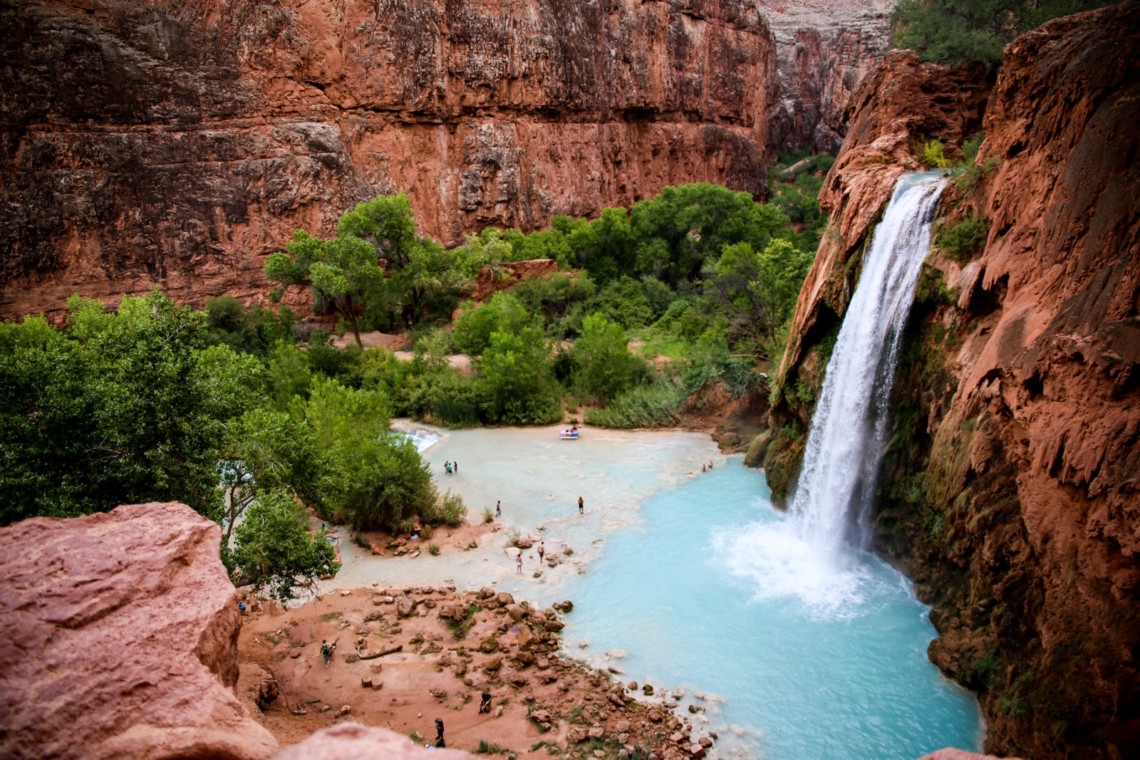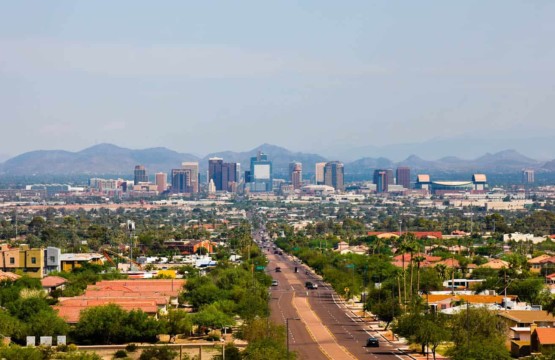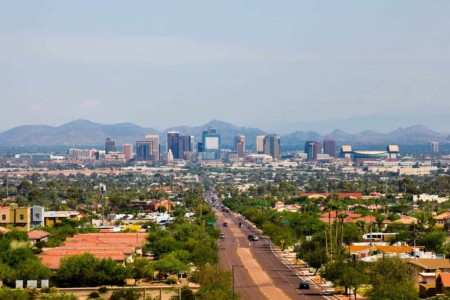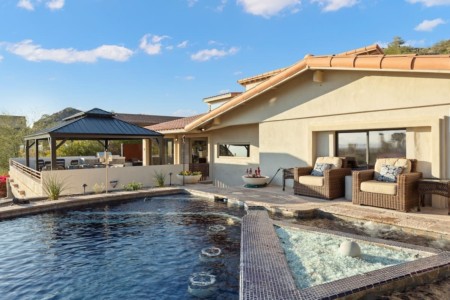Arizona is not just desert — lush, rolling fields of grain and red rocks towering into the sky make up a lot of the state as well. In fact, Arizona national parks are some of the greatest examples of rustic desert beauty in the entire world. Here are 10 of our favorites, with an emphasis placed on diversity.
Note that not all of these are technically national parks — some of them are national forests or wildlife preserves.
RELATED: Why You Should Visit Southern Arizona
In This Article:
The Grand Canyon
Monument Valley Navajo Park
Coconino National Forest
Saguaro National Park
Bill Williams River National Wildlife Refuge
Tumacacori National Historical Park
Petrified Forest National Park
Glen Canyon Recreation Area
Kofa National Wildlife Refuge
Wupatki National Monument
THE GRAND CANYON (FAR NORTH OF FLAGSTAFF)
Alright, let’s get it out of the way first: the most famous national park in the incorporated universe. The Grand Canyon is, of course, absolutely stunning, and its majesty will appeal to anyone no matter what type of person they are.
What most non-Arizonans don’t realize is how big the canyon is. In fact, it’s actually divided into two “rims” that are a five-hour drive apart because of how long the canyon is.
The south rim is more family-friendly. You can drive your car to most of it and the walking terrain is not as treacherous.
The north rim is rockier and less developed than the south. It’s more rustic and peaceful, but you’ll have to put on your hiking boots because it’s nowhere near car-friendly. It’s also a lot colder and can get snow.
MONUMENT VALLEY NAVAJO PARK (AT THE NORTHEASTERN ARIZONA BORDER)
These gigantic sacred grounds where members of the Navajo Native American tribe go to pray is the definition of red rock desert splendor. The endless sagebrush-dotted landscape is peppered with natural stone monoliths that stretch into the sky. It gives off an alien feel you can’t find anywhere else in America.
The grounds contain a few hiking trails and the rest is accessible by car. Be aware, though, that the landscape is pretty rugged and some cars might not be able to traverse it. The mechanics at the visitor center can help you determine if your ride is up to the task.
Remember that the land is holy to some, so please familiarize yourself with that before you visit out of respect.
COCONINO NATIONAL FOREST (NEAR FLAGSTAFF)
Like we said, not all of Arizona is desert. Coconino is one of six national forests in the state. It’s one of the most ecologically diverse areas in the US, and it has too many caves, fishing holes, mountains, and hidden groves to visit even if you camped there for a month. Some of the highlights include:
Elden Pueblo Archaeological Site
Fossil Creek
Palatki Heritage Site
Oak Creek Canyon
Cinder Lakes Apollo Training Area
Lava River Cave
V Bar V Heritage Site
SAGUARO NATIONAL PARK (NEAR TUSCON)
The Saguaro Cactus is the symbol of Arizona wilderness and arguably the entirety of the American Southwest, so visiting a huge desert dotted with millions of them (plus over two dozen other species of cactus) is an iconic Arizona experience.
The park is a hiker’s paradise, with over 150 miles of flat(ish) trails. All of them are accessible by car, too, although the park is so large that you shouldn’t expect drivers to constantly disturb the quiet wilderness setting.
BILL WILLIAMS RIVER NATIONAL WILDLIFE REFUGE (RUNS THROUGH THE MIDDLE OF THE STATE)
The refuge contains a massive amount of ecosystems, including the rare willow and cottonwood forests. Such a diverse range of greenery, aquatic biomes, and desert landscapes supports a huge range of wildlife, from bobcats to beavers to South American birds on vacation.
TUMACACORI NATIONAL HISTORICAL PARK (NEAR NOGALES)
Spanish settlements with adobe churches are the main attractions at Tumacacori. It will really appeal to history buffs who want a feel for Arizona’s colorful colonial history. The red brick buildings are in pretty good shape, and they really give off a feel of what life in Arizona may have been like hundreds of years ago.
PETRIFIED FOREST NATIONAL PARK (NEAR SUN VALLEY)
This forest used to be green, but it’s now grey, rocky badlands dotted with colorful petrified trees. It’s a fairly unique landscape type for Arizona, and it offers tranquility you can’t find elsewhere.
GLEN CANYON RECREATION AREA (IN PAGE)
Red Rock formations line the enormous and undisturbed body of water known as Lake Powell in this gigantic recreation area. There are so many isolated places, from desert mesas to picturesque fishing holes, that you can explore on your own or with a tour.
KOFA NATIONAL WILDLIFE REFUGE (NEAR YUMA)
The main attraction at Kofa is the Bighorn Sheep, which has nearly gone extinct everywhere else. They’re amazing creatures, and kids will be endlessly fascinated with how they can scale cliff faces with seemingly impossible ease.
Kofa also has a lot of history, what with all the nearby abandoned mines. It’s a good place for people who love wildlife and old western culture.
WUPATKI NATIONAL MONUMENT (NEAR FLAGSTAFF)
Wupatki is Arizona’s best area for seeing ancient Native American settlements that have been preserved relatively well. You of course won’t get them, essentially, 100%-preserved buildings of Tumacacori, but it’s a fascinating glimpse into a culture long past.
Arizona’s National Parks are so numerous and so diverse that you would have to dedicate an entire lifetime to explore them all. Hopefully, this quick guide helps you narrow down which ones you’d like to explore.










